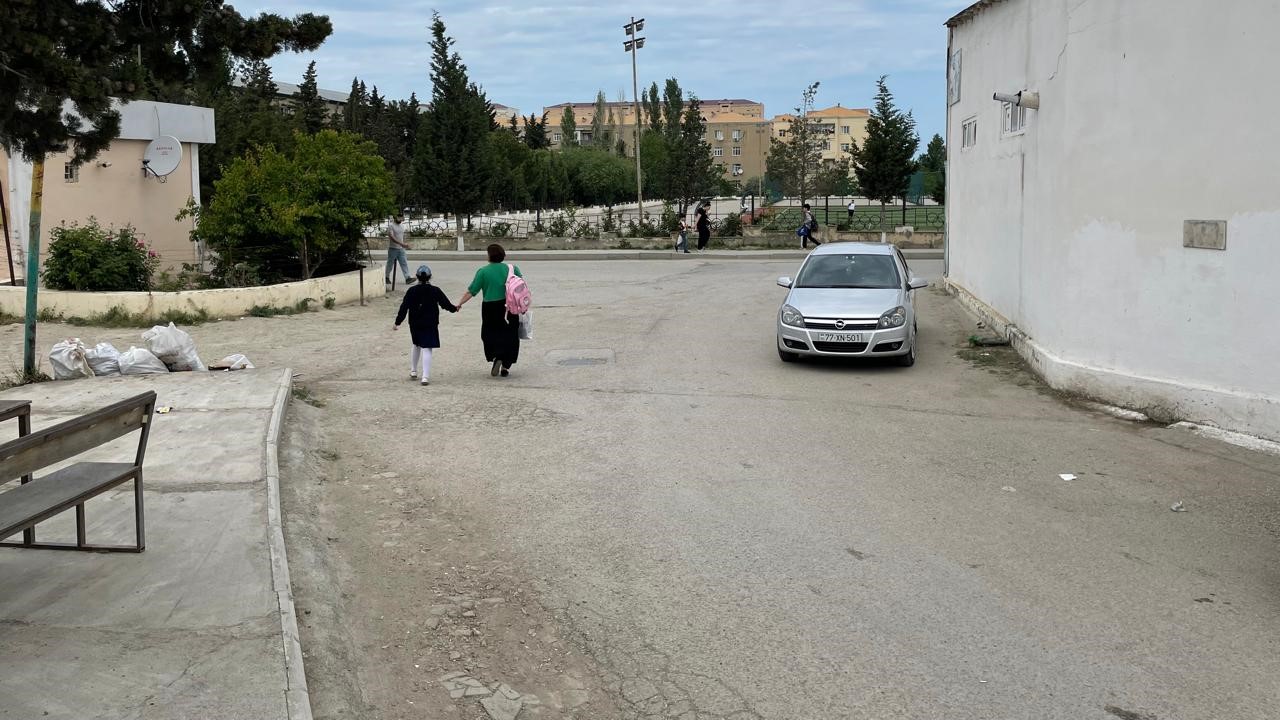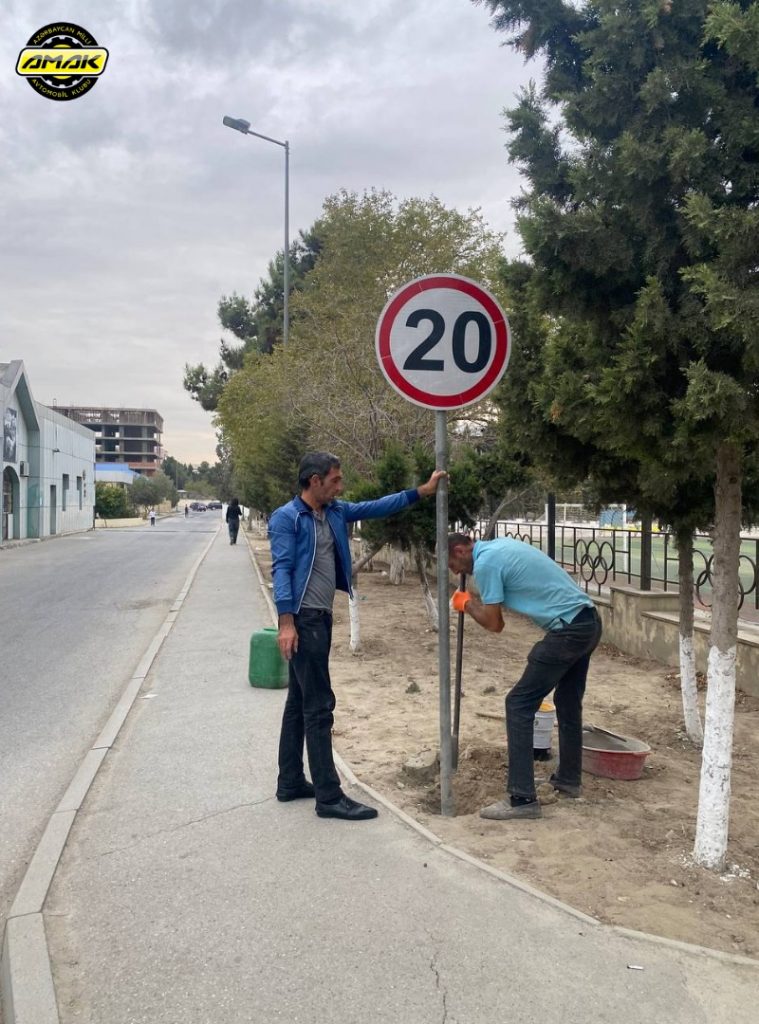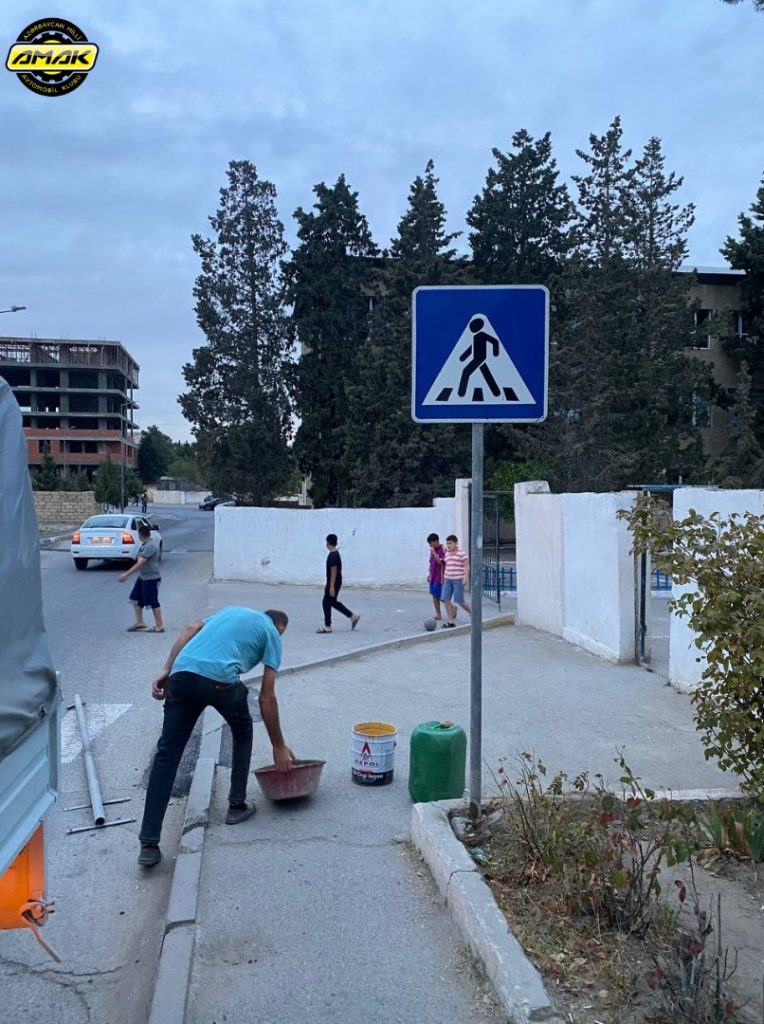
The intersection of Asadov Street and School No. 4
In Sumqayit, Azerbaijan, the speed limit at the intersection of Asadov Street and School No. 4 has been set to 20 km/h, exceeding the advocacy demand of National Automobile Club of Azerbaijan (AMAK) for 30 km/h. This advocacy success came following AMAK’s Mobility Snapshot at the intersection which revealed safety risks to the 1,200 pedestrians who navigate it daily. The intersection lacked basic road infrastructure such as traffic signals, road signs, and pedestrian crossings, in addition to 45 km/h vehicle speeds.
AMAK shared its Mobility Snapshot findings with the community and authorities, focusing their advocacy on the implementation of evidence-based interventions such as reduced speeds and pedestrian facilities. This contributed to the implementation of a 20 km/h speed limit around School No. 4—Azerbaijan’s first speed limit set below 30 km/h. Additional infrastructure like pedestrian crossings, segregated footpaths, and speed bumps have been installed.


AMAK has continued its advocacy and collaboration with local authorities and the police to ensure adherence to the new speed limit. It is also meeting with the community including schoolchildren, parents, and school staff to promote safe road behaviors.
“These changes have transformed the previously chaotic environment into a more organized and safer space for road users. The new speed limit, along with the installation of road signs, speed bumps, and clear pedestrian crossings, has created a secure zone for school children, helping to regulate vehicle flow and enhance pedestrian safety,” says Elizabete Nasibova, AMAK, Azerbaijan. This success could have a positive spillover effect on other intersections and support our ongoing advocacy efforts in the area, noted Elizabete.
This success story shows how Mobility Snapshots empower NGOs to utilize detailed, data-based insights to advocate for road safety improvements. By highlighting specific risks like high traffic speeds and lack of pedestrian facilities, the snapshots create a strong, evidence-based argument that compels local authorities to act. Such data-driven advocacy leads to rapid implementation of measures, including speed reductions and enhanced pedestrian paths, directly contributing to achieving the targets set out in the Global Plan and making tangible progress in improving road safety.